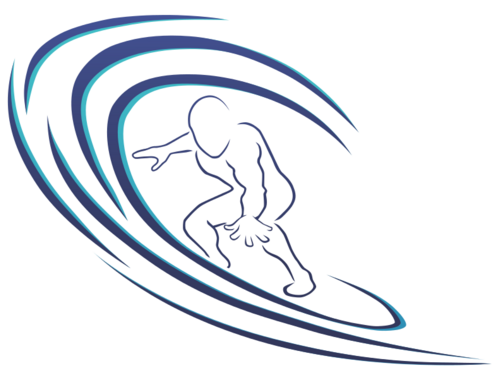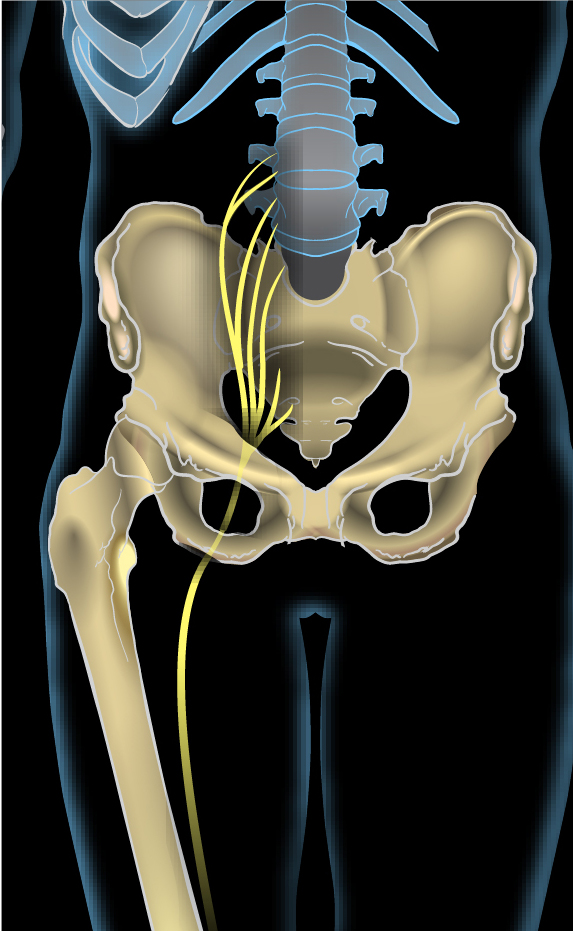What is lumbar radiculopathy?
Lumbar radiculopathy is the medical term for irritation of a spinal nerve root in the low back. According to epidemiological studies, the overall prevalence of at least one episode of back pain in the general population is between 15%-60% (1,2).
Lumbar radiculopathy, which is not the same as low back pain, is estimated to have an overall prevalence of 3-5% (3). The development of lumbar radiculopathy, or irritation of the nerves to the lower extremities, is usually due to the progressive development of arthritis in the low back over time.
As we age, we accumulate wear and tear in our low back, which can lead to small bone spurs, overgrown ligaments, or disc herniations. Usually, arthritic changes either cause disc herniations that compress a nerve root or lead to narrowing of the small spaces through which the nerve roots exit the spine, leading to irritation and compression of the spinal nerve roots.
Who gets lumbar radiculopathy?
Men are most likely to develop lumbar radiculopathy in their 40’s while women are usually in their 50’s or 60’s (3). Although lumbar radiculopathy is considered a multifactorial problem, there are a few direct risk factors that are known to lead to its development.
In general, researchers believe that repetitively lifting heavy objects, repeated minor traumas such as falls, and aging, in general, all increase the risk for the development of lumbar radiculopathy.
What are the symptoms of lumbar radiculopathy?
Many people, from patients to physical therapists to doctors, confuse the symptoms of low back pain and radiculopathy and use the phrases interchangeably.
Low back pain…
- is usually in the middle of the back
- has a dull-achy quality
- doesn’t radiate
- is usually caused by a combination of muscle stiffness and arthritis in the joints of the spine
In contrast, lumbar radiculopathy…
- is usually described as a “shocking” or “sharp” pain
- tends to radiate down one or both legs
- results in numbness or tingling in the legs and/or feet
- results in weakness of the legs and/or feet
How is lumbar radiculopathy treated?
Although most people think of surgery whenever they hear the phrase ‘herniated disc’ or the word “radiculopathy,” surgery usually isn’t the preferred treatment method. In fact, research following patients who had a confirmed disc herniation causing their lumbar radiculopathy showed that over 80% improved significantly or recovered completely with non-invasive, non-surgical interventions (4).
Another study, a randomized-controlled trial of non-operative management vs. surgery, found that, after two years, the outcomes for patients who presented with lumbar radiculopathy due to disc herniation were equivalent (5). Typically, spine surgeons recommend surgery in cases where radiculopathy is associated with significant weakness, difficulty ambulating or caring for yourself, or if there is evidence that the nerves that supply the bowel or bladder are injured.
Non-surgical therapies include physical therapy, chiropractic care, and the McKenzie Method.
Over the counter medications (like NSAIDs) are often the first line in addressing the symptoms of lumbar radiculopathy when they appear. Other medications may be recommended to address nerve pain and may help reduce the pain from lumbar radiculopathy. Check with your healthcare provider.
Heating pads or ice packs may be used to help relieve pain, depending on patient preference.
Other, non-surgical therapies such as laser therapy have been studied and found to be effective in the treatment of lumbar radiculopathy. One study demonstrated that laser therapy with pain medication reduced pain scores by 56% compared to medication alone (which reduced pain scores 23%) in patients with low back pain and lumbar radiculopathy (6).
Additionally, massage and acupuncture can be helpful therapies in the treatment of radiculopathy-associated pain.
Ultimately, every patient is different, and many patients respond differently to identical therapies. Hence, a careful strategy of trying different pain management strategies to find the right regimen is one of the critical components to addressing pain from lumbar radiculopathy.
How can I prevent lumbar radiculopathy?
A large portion of us is likely going to be confronted with low back pain or lumbar radiculopathy at some point during our lives. The good news is that the research shows us that most people who must deal with lumbar radiculopathy will get better over time, regardless of the type of intervention used. While there is no one thing you can do to completely reduce your risk of developing lumbar radiculopathy, there are a few considerations.
Smoking has been implicated in low back pain and in the development of poor disc health, so quitting is an excellent first step to reducing your risk. Also, paying attention to your back, and lifting objects in a controlled motion, using correct form, will protect your spine joints and your intervertebral discs. Overall, living a healthy life and listening to your body is key in protecting your spine and lowering your risk for developing lumbar radiculopathy over time.
Schedule a consultation with one of our healthcare providers.
If you think you might be experiencing cervical radiculopathy, give our office a call to set up your initial visit.
References:
1. Hoy D, Brooks P, Blyth F, Buchbinder R. The Epidemiology of low back pain. Best Pract Res Clin Rheumatol. 2010;24(6):769-781.
2. Alexander C, Varacallo MA. Lumbosacral Radiculopathy – StatPearls – NCBI Bookshelf. StatPearls. 2019;1(1).
3. Tarulli AW, Raynor EM. Lumbosacral Radiculopathy. Neurol Clin. 2007;25(2):387-405.
4. Saal JA, Saal JS. Nonoperative treatment of herniated lumbar intervertebral disc with radiculopathy: An outcome study. Spine (Phila Pa 1976). 1989;14(4):431-437.
5. Weinstein JN, Tosteson TD, Lurie JD, et al. Surgical vs nonoperative treatment for lumbar disk herniation. The Spine Patient Outcomes Research Trial (SPORT): A randomized trial. J Am Med Assoc. 2006;296(20):2441-2450.
6. Konstantinovic LM, Kanjuh ZM, Milovanovic AN, et al. Acute Low Back Pain with Radiculopathy: A Double-Blind, Randomized, Placebo-Controlled Study. Photomed Laser Surg. 2010;28(4):553-560.

